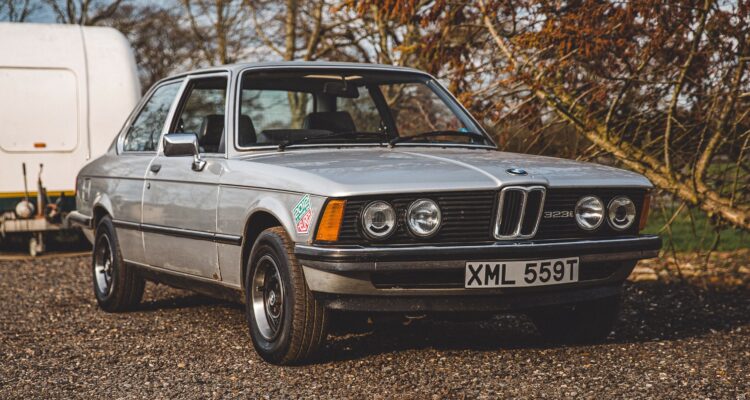Sweet 16 – 1932 Cadillac Fleetwood V16
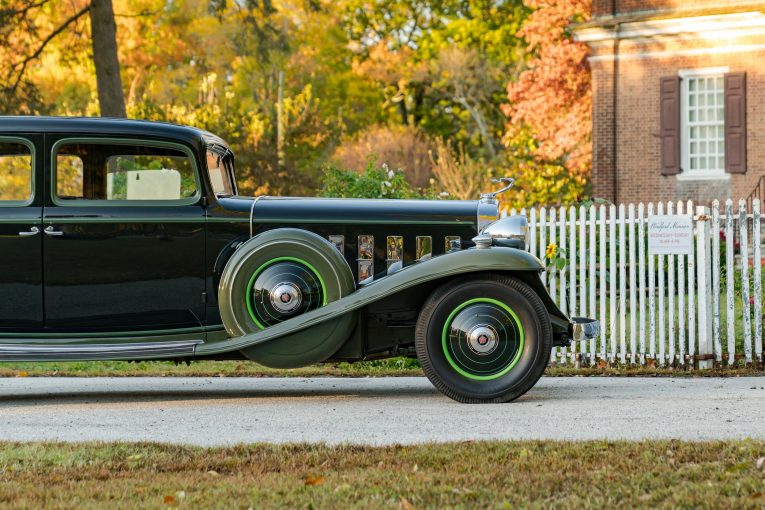
Back in the golden age of motoring, bigger was better. Today, we are the grateful recipients of many, many years of technological innovation. The kind of innovation that means we can screw 500bhp out of a 2.0 four-cylinder engine, for example. Back when everything was black and white and the Charleston was the dance of choice, such innovations weren’t available. As such, the mantra of ‘bigger is better’ ruled supreme.
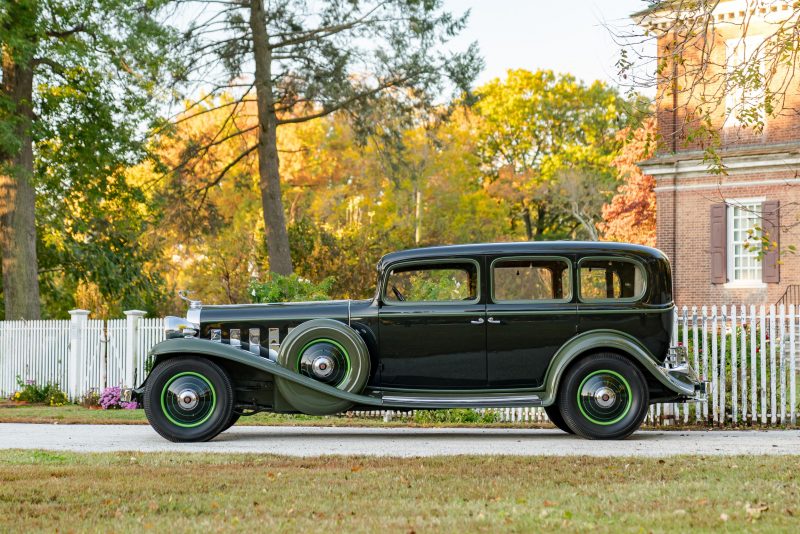
This was something the Packard Motor Company was keen to capitalise on. How? By stunning the motoring world with a V12 engine. It was big, it was (for the time) powerful and as such, it didn’t fail to impress the masses. It did not, however, impress Cadillac. In fact, Cadillac, which was scrapping it out for the luxury top spot against Packard, saw it as a considerable threat. Cadillac needed to up the ante, it needed something of its own that would rival the V12 of Packard. As such, Cadillac’s General Manager, Lawrence Fisher, told the world that it too was developing a V12.
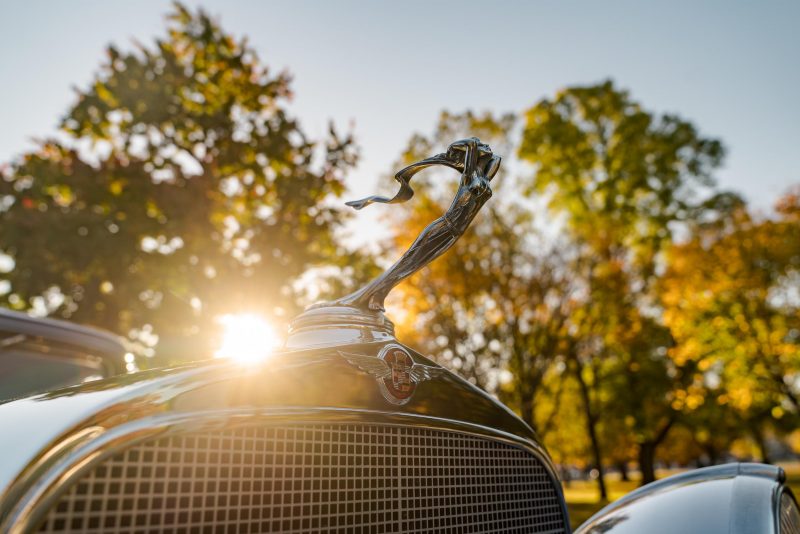
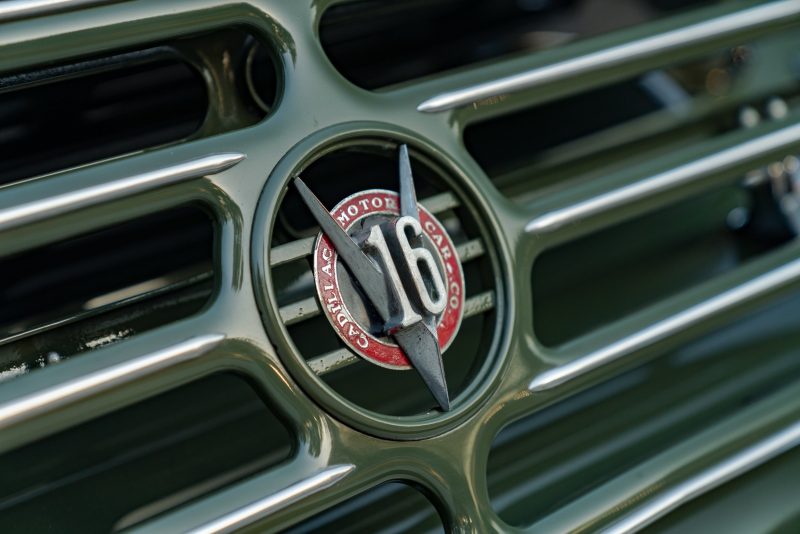
Cadillac’s main man was telling the world a lie though. There were no plans to build a V12. Packard had a V12, so why spend many dollars on developing something that would give Cadillac an equal footing? No, that made no sense. The V12 line was a rouse, it was a declaration of intent, but nothing more. The reality was that Cadillac, embracing the ‘bigger is better’ train of thought, was working on a V16. You know, as you do.
You’d think that a V16 would be quite the feat, and in some respects it was. However, its core construction was remarkably simple. It was essentially two straight-eight engines with a common crankshaft. Each bank operated independently, except at the crank of course. It was a simple solution, and it worked. The two banks were set at 45 degrees apart, thus allowing the whole thing to slot into the narrow Cadillac chassis. Each bank had overhead valves, hydraulic tappets, with two single barrel carbs feeding the whole affair with air and fuel – one carb per bank.
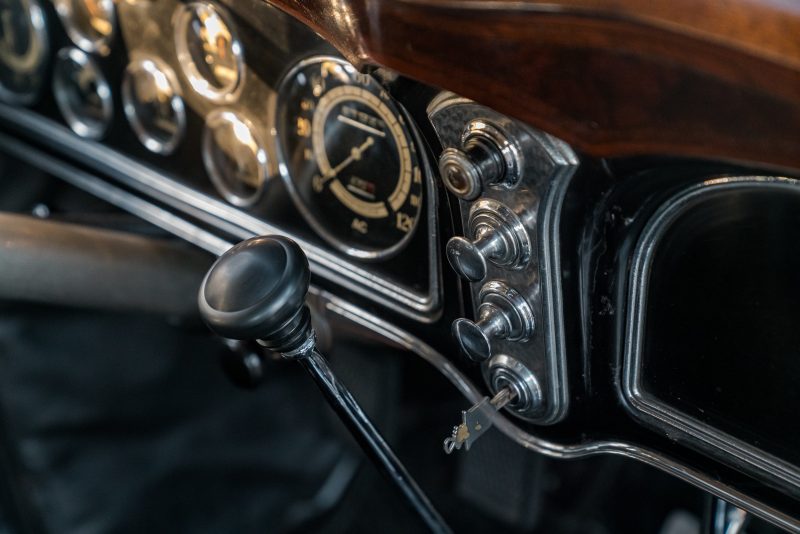
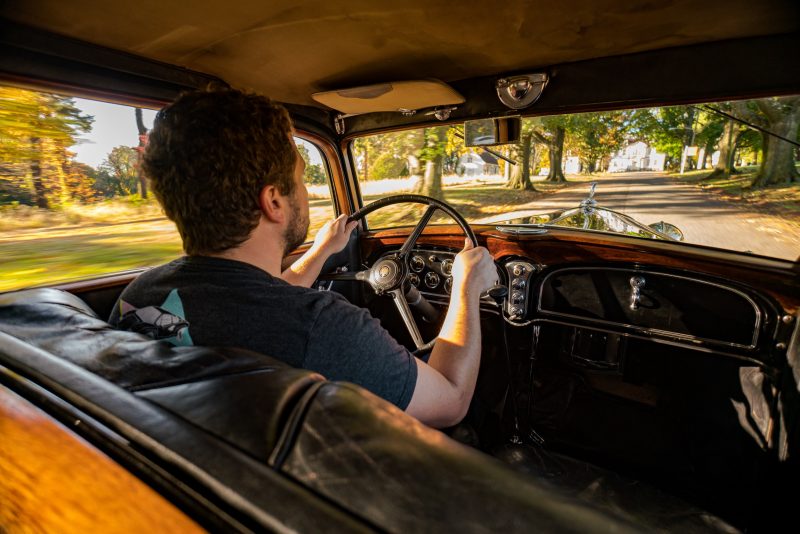
This behemoth would produce a ludicrous amount of power, right? Well, no, not really. The 452 as it was known, due to the 452 cubic inch (7.4 litre) capacity delivered, ahem, 165bhp. Or, 22.3bhp per litre. That’s not a lot by today’s standards, but that’s not how you should be looking at this car. For 1932, it was a lot. And that big engine, while humble on power was big on torque. The 452 kicked out 320lb ft, which was enough to hustle the car to well over 80mph – rocket speed at the time.
The car you’re looking at here, a frankly magnificent 1932 Cadillac Fleetwood Imperial Limousine is powered by that very engine, hence it being known as the 452B version. Fewer than 4,000 of these engines were built, and even fewer than that survive. To see one still in situ, in the car that it has called home for nearly 90 years is quite something. And the whole affair serves to prop up that now aged notion of bigger being better. Packard and Cadillac were battling it out to be the number one luxury automobile in America, and it was this, the 452, that put Cadillac back on top. It’s easy to see why.
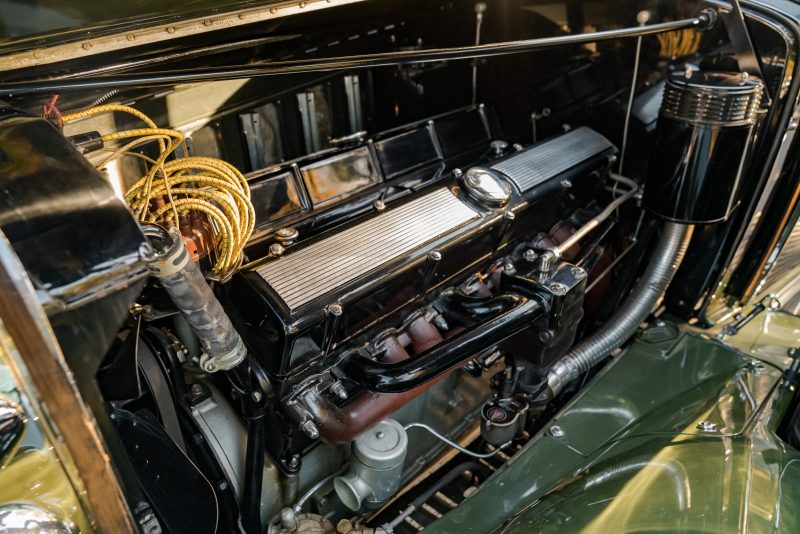
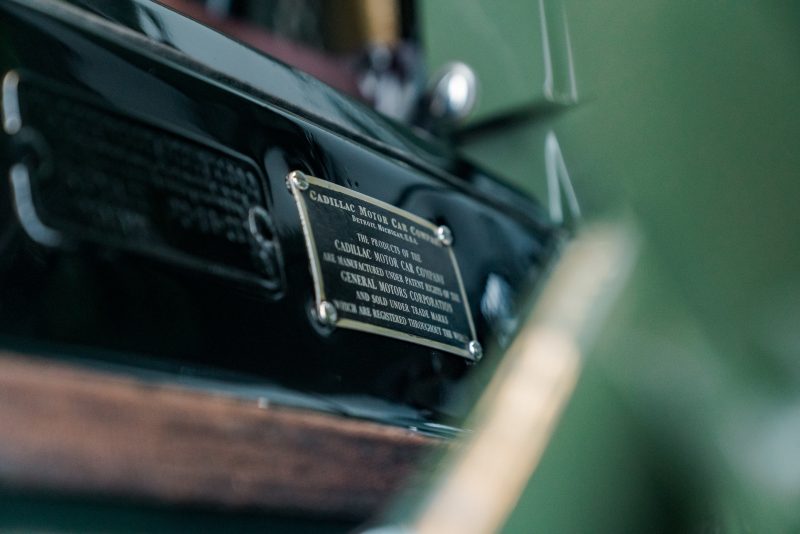
And the car you see here is not just an example of Cadillac’s return to luxury dominance. No, this particular Cadillac is far more special than that. For sale in the States with LBI Limited, this 1932 Fleetwood Limousine is possibly the finest remaining example, and it carries with it an interesting and unusual history.
From the chassis/engine number 1400071, those in the know can glean that this was the 70th V16 built for the 1932 model year, but that’s not the truly special part. This car in particular was not built for a wealthy owner. Instead, it was built to be used as a show vehicle at the 1932 Montreal Auto Show. This is why this particular Cadillac has a more European flavour, care of things like the white-wall delete, the full wheel discs and a chassis painted in a lighter hue. These touches would, hopefully, make the car an appealing prospect to the Canadian market. Furthermore, this car was fitted with (and still retains) hooks in the rear for hanging different coloured fabric swatches. Said swatches are still, after all this time, with the car.
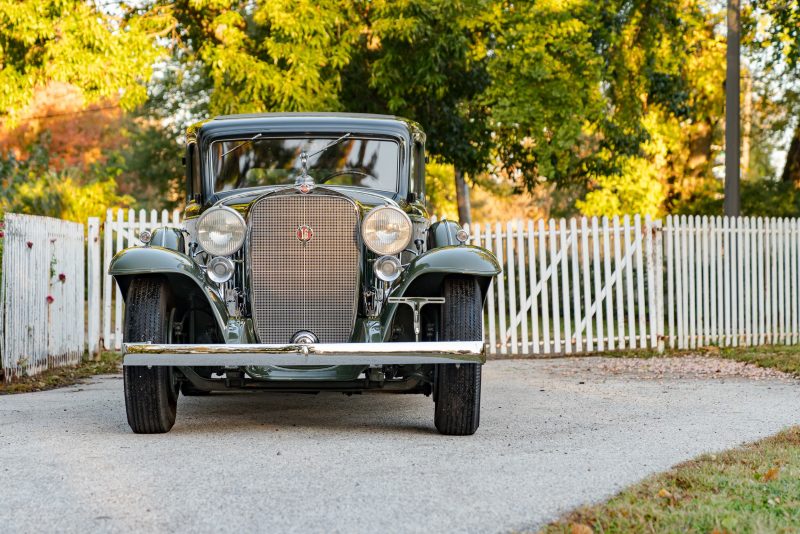
What’s also fascinating about this car is the fact the interior is untouched and unrestored. In the rear ‘limousine’ section of the cabin, the original suede cloth is in place. Up front, the driver compartment is trimmed with the original leather. Back in the ‘20s and ‘30s, leather was not the luxury trim we see it as today. As such, that’s what the driver got because it was hard-wearing. The luxury trim was the suede.
Externally, this car is largely unrestored in as much as all the panels are original to the car. It has been on the receiving end of a sympathetic restoration though, to bring the vivid Aiken Green and Kalida Green paint back up to spec. Some of the chromework had succumbed to the ravages of time, too. However, nothing has been replaced. It’s been re-chromed in places though. A car such as this befitting of nothing less.
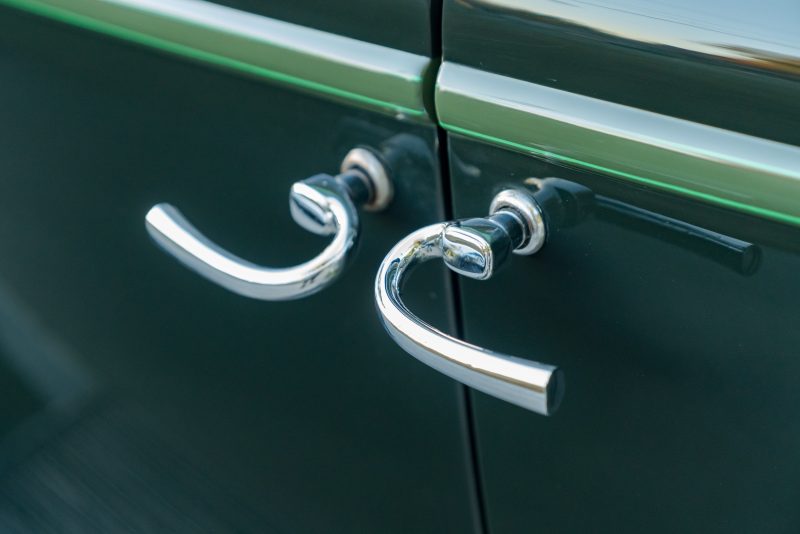
The body is what earns the car its Fleetwood title. Buyers did have the option to simply buy the chassis and engine, as was par for the course back then. However, the same Lawrence Fisher who was the GM of Cadillac at the time of this car’s inception originally came from the Fisher Body Company, which was brought under the General Motors umbrella in 1919. In 1925, Fisher oversaw the purchase of the Fleetwood Metal Body Company. As part of the Cadillac family, Fleetwood built bodies to specification for Cadillac, one of which being the limousine body seen here.
This particular car, as we said earlier, was built for the show circuit. However, from the 1930s through to the year 2000, the history of the car is largely unknown. It must have led a considered and appreciated life though, as when the car did resurface in 2000 it was running and in good health, just in need of a visual freshen up. Something the current owner, a partner in the Canton Classic Car Museum was more than happy to facilitate.
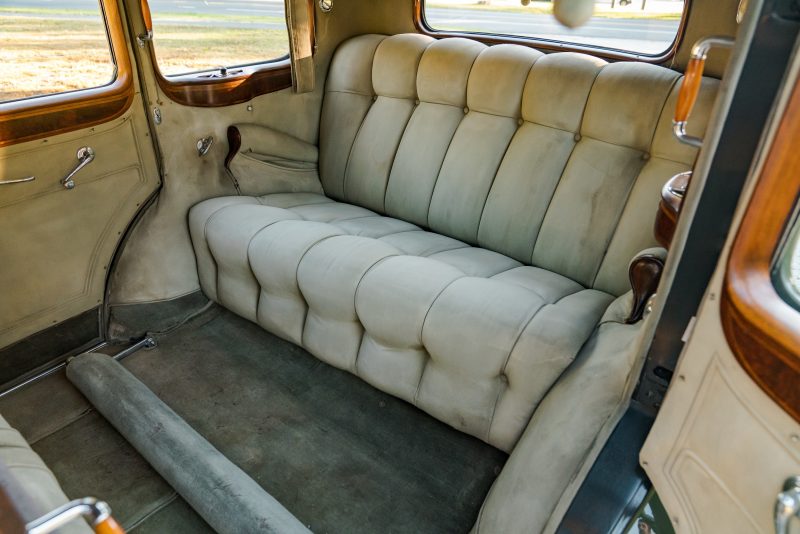
Now the car exists as a handsome, wonderfully full-on and frankly, physically huge reminder of how a car company got to be the top dog for luxury back in the 1930s. Today’s automotive landscape is about frugality, about packaging and space saving. This Caddy doesn’t subscribe to that notion one little bit, and frankly, it’s all the better because of that. We’re never going to go back to the days of bigger being better, which is why the survival of cars such as this is so important. And for £129,000, you could be the next custodian of this incredible machine. It’s a slice of motoring history, if you have the means, well worth considering.
Photo Credit – LBI Limited – to see more of their stock or to find out more about this car, visit their website.

